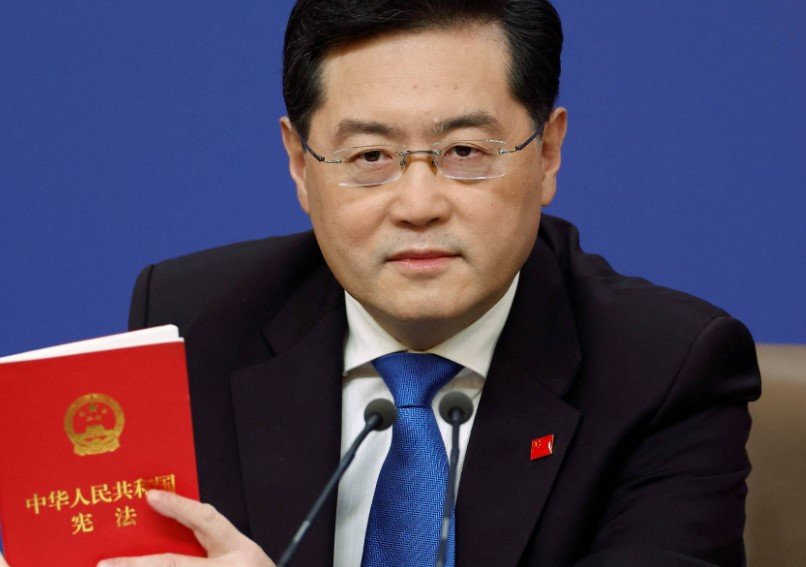Beijing has sharply pushed back against reports that US chipmakers Nvidia and AMD will hand over a slice of their China revenues to Washington in exchange for export licenses, framing the alleged deal as yet another example of technology being turned into a political weapon.
Beijing Draws a Line on Chip Politics
Asked on Monday about media reports claiming the two US semiconductor giants agreed to give 15% of their China sales to the US government, Chinese Foreign Ministry spokesperson Lin Jian didn’t confirm the specifics. But his tone left little doubt about Beijing’s view.
“China has made its position clear more than once on the US export of chips to China,” Lin told reporters. “We oppose the politicization and weaponization of tech and trade issues, as well as malicious blockade and suppression against China.”
His remarks came amid growing friction over US export controls on advanced semiconductors — especially high-bandwidth memory (HBM) chips, a critical component in artificial intelligence systems and supercomputing.
Nvidia, AMD and the 15% Question
The original reports, yet to be officially confirmed by the companies or US officials, suggest Nvidia and AMD may be working under a new arrangement: to secure licenses to ship certain advanced chips into China, they would remit 15% of related revenues to Washington.
For Nvidia, China is one of its largest overseas markets, accounting for an estimated $5 billion to $7 billion in annual revenue. AMD’s exposure is smaller in absolute terms but still significant for its data center and AI product lines.

If the numbers are accurate, a 15% levy could translate into hundreds of millions of dollars a year flowing directly to the US Treasury — a mechanism that would not only fund domestic initiatives but also serve as a pressure valve in ongoing export control disputes.
China’s Frustration Goes Beyond the Money
Beijing’s reaction isn’t just about the cash. For years, Chinese officials have bristled at Washington’s moves to tighten restrictions on chip exports, citing national security concerns and fears over military use of AI.
In Monday’s briefing, Lin warned that such practices “disrupt the stability of global industrial and supply chains and are in nobody’s interests.”
This language — “nobody’s interests” — signals that China wants to frame the dispute not simply as a bilateral fight, but as a risk to the entire global tech ecosystem. Many countries rely on the smooth flow of high-end chips and components to keep their own industries humming.
The Stakes in High-Bandwidth Memory
The specific mention of HBM chips underscores how narrow the choke points have become in the US-China tech rivalry. HBM is a key enabler for training large AI models and running complex simulations. Without it, China’s AI ambitions could slow significantly.
US export rules have already limited access to Nvidia’s most advanced chips, such as the A100 and H100, forcing the company to develop China-specific versions with lower performance. Similar constraints have been applied to AMD’s top-tier accelerators.
Industry analysts say these workarounds — and any licensing deals tied to them — are inherently unstable. “You can redesign products to meet the letter of the rule, but if the rules keep changing, the business case erodes,” said one Asia-based semiconductor consultant.
How a 15% Levy Could Play Out
If implemented, a revenue-sharing arrangement would be unusual but not without precedent in regulated industries. It would effectively function as a “compliance fee” tied to a high-risk export category.
Possible effects:
-
Pricing pressure: Companies may pass some of the added cost onto Chinese buyers, potentially reducing demand.
-
Market share shifts: Domestic Chinese chipmakers could gain an edge if foreign prices climb too high.
-
Regulatory precedents: Other governments might copy the model for sensitive tech exports, from quantum computing to biotech.
Global Market Implications
The chip industry is already under strain from supply chain bottlenecks, fluctuating demand, and geopolitical uncertainty. The prospect of a 15% revenue skimming by the US government could add another layer of complexity to global pricing and production decisions.
Semiconductor stocks were mixed in Monday trading. Nvidia dipped slightly in New York, while AMD ended marginally higher. Chinese tech shares in Hong Kong were little changed, though some analysts say investor unease could grow if Beijing responds with retaliatory measures.
What Beijing Might Do Next
While China has yet to announce any direct countermeasures, past responses to US tech restrictions have included tighter export controls on critical minerals such as gallium and germanium, both essential in semiconductor manufacturing.
Beijing could also accelerate subsidies for domestic chipmakers, boosting efforts to replace US suppliers entirely in certain product categories. “The more Washington closes the door, the more resources Beijing will throw at building its own house,” one policy researcher in Shanghai said.
A Fight With No Clear Off-Ramp
The reported Nvidia-AMD deal, if accurate, doesn’t end the US-China chip fight — it changes the terrain. Instead of a blanket ban, it creates a revenue filter that allows limited access while keeping the pressure on.
For companies caught in the middle, that’s both a relief and a headache. They keep selling, but under tighter constraints and with a portion of their earnings siphoned away. For governments, it’s a test of how far they can push without prompting outright decoupling.
As Lin put it, China’s opposition to these “malicious” practices is “consistent and clear.” That consistency may be one of the few predictable elements in a conflict where the rules keep shifting.
